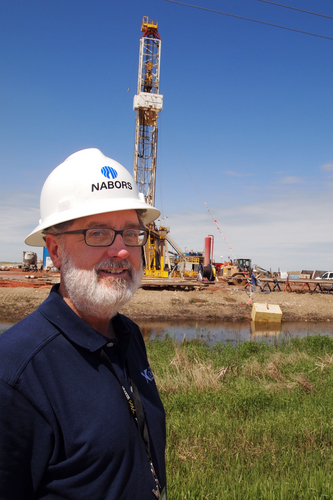North Dakota’s Williston Basin Chief Regulator Predicts Lower for Longer under Trump, $50 Oil by End of 2016
In his Director’s Cut webinar today, North Dakota Industrial Commission Director Lynn Helms predicted that big changes are coming in the wake of U.S. elections, the upcoming OPEC agreement, and ongoing developments in the oil and gas industry.

Photo Credit: Prairie Biz
Preliminary September oil production in North Dakota stands at 971,658 BOPD, down from the all-time high of 1,227,483 BOPD in December 2014. Gas production stood at 1,611,836 Mcf/day, slightly down from the all-time high of 1,709,945 Mcf/day in March of this year.
Seventy-two new wells were brought online, bringing the number of producing wells in the state up to 13,367. At the moment, 38 rigs are operating, up by five from October. Operators are expected to add about 12 rigs in 2017, pushing the state total up to 50. No info was provided on 2018 plans.
Helms said that “operators are now shifting from running the minimum number of rigs to incremental increases throughout 2017 as long as oil prices remain below $60/barrel WTI.”
Efficiencies and Technology Make Core Bakken Breakevens Competitive With Middle East
Lower breakevens due to higher drilling and completions efficiencies were cited as the reason for the 12 rigs added. Except for Williams county, third quarter breakevens for all counties in the state have dropped between $5 and $13 per barrel.
“What we’re seeing are industry efforts to increase efficiency and move to lower and lower breakeven prices are having a serious effect. So when we get into 3Q, we see breakevens well under $30, meaning all counties in ND are better than breakeven for drilling,” Helms said.
| County | Breakeven ($/bl) | Active Rigs | DUCs |
| Dunn | $15 | 10 | 128 |
| McKenzie | $17 | 12 | 360 |
| Mountrail | $29 | 4 | 187 |
| Williams | $24 | 4 | 146 |
| North Dakota | $21 | 34 | 887 |
Source: NDIC
Dunn County featured the lowest breakeven due to higher completions of DUCS allowed by the installation of natural gas gathering and processing infrastructure at Bear Creek.
New high-volume, slick water fracs with 40-50 stages; Dunn County competitive with the ME
“Once compression was there, we saw XTO and ConocoPhillips go out and test some of the new high-volume, slick water fracturing with 40-50 stages and results are fantastic. Wells are coming in 200-300 BOPD better than McKenzie County wells and they have a lower GOP ratio.”
Helms further called Dunn County “absolutely one of the most efficient places in the world to drill,” saying that it was “competitive with the Middle East in terms of bringing on new oil reserves.”
If OPEC Cuts Production, Expect $50 Oil by End of Year
Regarding OPEC, Helms reminded the audience that despite the increasing probability of cuts, production increases since the September OPEC meeting mean larger cuts will be needed. “We expect a $5 increase to $50 oil by the end of this year and no justification for much drilling for another two to three years.”
Referencing the large number of DUCs still in place, Helms noted that “even if OPEC cuts production, there is a lot of opportunity for increased U.S. production, so do not expect any rapid increase.”
Helms said that if OPEC cuts by 1 MMBOPD or more, that would put oil solidly above $50 WTI price, which is a key number in terms of mobilizing frac crews and stabilizing North Dakota production. Oil at $50-55 would allow running room to frac wells and stabilize production at 900,000 BOPD.
Trump’s Election Increases Likelihood of “Lower for Longer”
Helms believes that President Trump’s goals to make drilling, fracking, and moving oil easier combined with the OPEC outlook and a high DUC inventory means that the 1.5 MMBOPD oil production drop needed to push prices above $60 by 2017 is unlikely to happen.
In regards to the Dakota Access Pipeline (DAPL), Helms said that completing DAPL would give operators greater confidence in $6 to $10 transport costs as opposed to the $15-$25 required to transport crude by rail. This would reduce investor and lender uncertainty, helping companies to stabilize production and keeping prices lower for longer.
New Methane Rule
During the webinar, the question was asked, “How will new BLM methane rule effect North Dakota?
Helms: “My preliminary review is very promising. They made a lot of changes to make it compatible with North Dakota gas capture rules. Our big concern is if you begin to apply federal rules to private and state mineral owners, just because they fall within the spacing.
Helms said the BLM shifted from a prescriptive volume number to a percentage gas capture numbers, like North Dakota uses, they shifted the time frames and made the rule far more compatible with the way North Dakota regulates flaring. “Its’ a very different rule,” Helms said.


